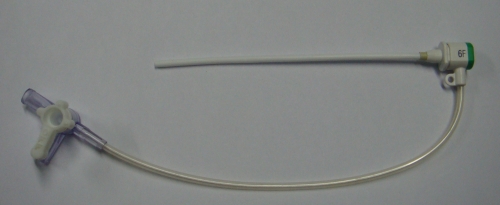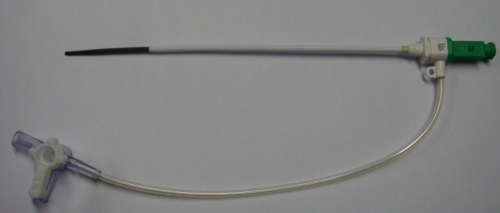Valved arterial sheath with side arm and stop cock
Valved arterial sheath with side arm and stop cock
Valved arterial sheath with side arm and stop cock is used for introduction of catheters serially into major arteries like the femoral artery.

The sheath is introduced over a guide wire which has been passed through the arterial puncture needle (Seldinger needle). A dilator is inserted into the sheath prior to introduction and removed once the sheath is within the artery, as confirmed by withdrawal of bright blood from the side arm.

Dilator of an arterial sheath prevents damage to the tip of the arterial sheath which is softer than the dilator and can become frayed. Care is taken to keep the tip of the dilator well beyond the sheath during introduction for this purpose as the dilator may slip back within the sheath if there is resistance for introduction. This can occur if it is a repeat catheterization and there is fibrosis in the track following the healing of the track created during the previous procedure.

Prior to the introduction of valved arterial sheaths, catheter exchanges used to be a difficult process of introducing each catheter over an exchange length guide wire. The chance for arterial trauma was higher with multiple catheter exchanges. There was also higher chance for bleeding from the artery during catheter exchange. Side arm is used for flushing the catheter with heparinized saline in between catheter exchanges to prevent thrombus formation. Side arm can also be used to measure arterial pressure soon after introduction of the sheath. The pressure wave form will be damped once the catheter is inside the sheath. If simultaneous sheath pressure monitoring is needed, it is better to use a larger sized sheath than the catheter to be used.

